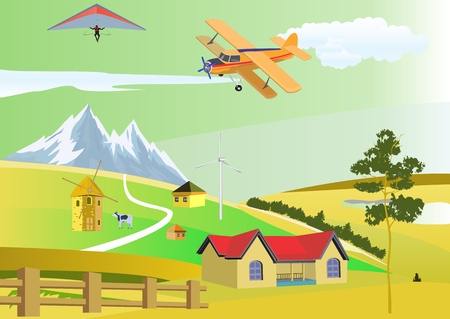Setting Off from the Fells: Introducing Peak District’s Landscape
Cradled in the heart of England, the Peak District is a region that radiates both rugged beauty and timeless allure. Rolling fells stretch beneath wide Derbyshire skies, their green contours punctuated by ancient stone walls winding like veins across the land. Here, heather-clad moorlands meet lush valleys, and fast-running brooks carve pathways through limestone dales. The patchwork of fields and farms tells centuries-old stories, while charming market towns such as Bakewell and Buxton pulse with local energy and tradition. It’s a landscape shaped by history yet alive with contemporary vibrancy—an ideal canvas for coffee adventurers seeking to blend the natural splendour of the countryside with the rich aromas of expertly roasted beans. As you set off from these iconic fells, prepare to immerse yourself in a journey where every hilltop view and cobbled street corner offers a new flavour, and every sip of coffee is steeped in the unique character of the Peaks.
2. A British Brew: Coffee Culture in Rural England
The coffee landscape in Derbyshire and the Peak District is a fascinating intersection of time-honoured British traditions and the innovative spirit of modern specialty coffee. While the region’s rural roots are steeped in a long-standing love for tea, an evolving appetite for craft coffee has taken hold, subtly reshaping both the café scene and local approaches to brewing.
Wandering through market towns like Bakewell or Buxton, one finds a distinctively British take on the café experience: rustic interiors, a focus on warm hospitality, and an unmistakable sense of place. Yet, alongside scones and Victoria sponge, expertly crafted flat whites and single-origin filter brews now feature prominently. The interplay between classic comfort and contemporary quality defines the region’s coffee culture.
Key Influences Shaping Local Cafés
British Tradition |
Modern Coffee Trends |
|---|---|
Emphasis on hospitality and community |
Specialty beans and precise brewing techniques |
Cream teas & homemade bakes as staples |
Single-origin espresso & alternative milks |
Cosy, familiar café settings |
Minimalist designs and open brew bars |
This fusion has led to a unique set of brewing preferences. Cafés in the Peaks may favour methods such as pour-over or AeroPress, reflecting a British desire for clarity and subtlety over intensity—mirroring the way locals have long enjoyed their tea. At the same time, there’s a growing appreciation for nuanced flavour profiles and provenance; roasters often highlight the journey from farm to cup with transparency akin to that found in artisanal cheese or ale production.
Ultimately, coffee in rural Derbyshire is less about fast-paced trends and more about thoughtful adaptation. The result is a welcoming environment where visitors can experience both the comforting rituals of a traditional English café and the precision of modern coffee craftsmanship—all while gazing out over windswept fells or verdant fields.

3. Sourcing the Best Beans: Local Roasters and Ethical Practices
The Peak District is not only a haven for ramblers and nature lovers, but also a burgeoning hub for coffee aficionados seeking quality and conscience in every cup. Across market towns and rural villages, small-batch roasters are quietly transforming the British coffee scene, blending traditional values with innovative approaches to sourcing and roasting. These passionate artisans forge direct relationships with coffee farmers, ensuring traceability from origin to cup—a hallmark of ethical practice that resonates strongly within the local community.
Championing Transparency and Fairness
Many Peak District roasters prioritise working with cooperatives and single-estate farms, often paying above fair-trade prices to support sustainable livelihoods. Their commitment goes beyond mere certification; it’s about transparency at every step. Customers can trace the journey of their beans, learning not only the farm’s name but often its story—how altitude, microclimate, and agricultural tradition shape each harvest.
Distinctly British Flavour Profiles
The roasting process itself is an art form here, influenced by both global trends and local taste preferences. While lighter Nordic-style roasts have gained traction elsewhere, Peak District roasters tend to favour profiles that celebrate comfort—think rich notes of toasted hazelnut, caramelised sugars, and a gentle acidity reminiscent of orchard fruits. These flavours mirror the region’s culinary heritage, aligning beautifully with a slice of Bakewell tart or Derbyshire oatcakes.
Community-Centred Craftsmanship
This dedication to craft is deeply rooted in community values. Many roasteries operate open-door policies, inviting locals and visitors alike to learn about green bean selection, sample new origins, and even participate in cupping sessions. It’s this blend of expertise, openness, and ethical intent that sets Peak District coffee apart—a celebration of both place and provenance.
4. From Roastery to Ramble: The Perfect Peak District Pour
The Peak District is not just a feast for the eyes; it’s fast becoming a haven for coffee aficionados seeking a cup that reflects the rugged and poetic landscape. Local roasteries have developed distinctive profiles, inspired by the area’s wild heather, peaty soils, and bracing countryside air. These elements aren’t simply romantic notions—they genuinely influence the flavour notes found in your cup. Let’s break down how these local roasting styles manifest on the palate, and where best to savour them whilst immersed in the region’s natural splendour.
Peak District Roasting Styles: A Technical Perspective
Roasters here often favour lighter to medium roast levels, allowing the nuanced acidity and floral top notes to shine—mirroring the fresh, untamed heaths. Some experiment with longer development times to coax out earthy undertones reminiscent of peat bogs and mossy woodlands. There’s also an emerging trend towards sourcing beans with herbal and berry profiles that echo the native bilberries and wildflowers dotting the moors.
Cup Profile Analysis: Tasting Notes Inspired by the Landscape
| Local Element | Roasting Influence | Tasting Notes |
|---|---|---|
| Wild Heather | Lighter roast, careful temperature modulation | Delicate florals, subtle honey sweetness, perfumed finish |
| Peat & Moorland Soil | Extended Maillard phase, slightly deeper caramelisation | Earthy base, hints of smoke, dark chocolate undertones |
| Fresh Country Air | Rapid cooling post-roast to preserve volatile aromatics | Crisp acidity, clean aftertaste, lively mouthfeel |
Recommended Spots for a Brew with a View
If you’re keen to pair your expertly roasted cup with breathtaking scenery, the Peak District abounds with perfect spots. For panoramic views, take your flask up Mam Tor or along Stanage Edge—both offer windswept vistas ideal for contemplation over coffee. In quieter corners like Padley Gorge or Derwent Valley, woodland glades provide a tranquil setting where wildflower notes in your brew seem almost amplified by the surroundings. Many local cafés also offer terrace seating with open countryside backdrops—standouts include those in Bakewell and Hathersage, where you can truly taste the Peak District in every sip.
5. A Taste of Community: Coffee Gatherings and Social Rituals
Among the rolling fells and emerald fields of the Peak District, coffee is far more than a solitary pleasure; it’s a linchpin of local culture and camaraderie. From traditional village halls to bustling market squares, the ritual of gathering over a cup of coffee has become deeply embedded in the social fabric of Derbyshire life.
Coffee Mornings: The Heartbeat of Village Life
Step into any village on a Saturday morning and you’re likely to encounter a coffee morning—a cherished British tradition where neighbours convene, cakes are home-baked, and newcomers are welcomed with genuine warmth. These gatherings serve as informal forums for friendship and support, whether raising funds for local causes or simply sharing stories from the week. The hum of conversation blends seamlessly with the gentle clatter of cups, creating an atmosphere that feels both timeless and vital.
Tearooms: Cosy Havens with Character
The Peak District’s tearooms—often housed in stone cottages or historic buildings—offer shelter from bracing winds and drizzling rain. Here, artisan roasts sit alongside classic English teas, and visitors are greeted like old friends. The pace slows as people linger over their brew, discussing everything from weather to walking routes. This convivial environment reflects a uniquely British approach: coffee is not hurried or transactional, but rather an invitation to pause and connect.
Outdoor Pop-ups: New Traditions Rooted in Community
In recent years, outdoor coffee pop-ups have brought fresh energy to village greens and fellside paths. These small-scale ventures—sometimes operating from converted vans or rustic stalls—offer locally roasted beans brewed al fresco. Walkers congregate mid-ramble, dogs at their feet, exchanging hiking tips or simply savouring the view with a hot cup in hand. These pop-ups embody both innovation and inclusivity, drawing together locals and visitors alike.
Fellowship Through Coffee
Whether inside a snug tearoom or gathered beneath open skies, the act of sharing coffee in the Peak District is steeped in fellowship. It speaks to an enduring British value: the importance of community, no matter how remote or windswept the setting. In every shared pot and friendly greeting, one finds not just refreshment but a sense of belonging—a testament to how deeply coffee culture is woven into life from fells to fields.
6. Conclusion: Lasting Impressions from Peaks to Ploughlands
The Peak District is more than a destination; it’s a living story woven from ancient fells, rolling fields, and the vibrant communities who call this landscape home. Here, coffee isn’t just a beverage—it becomes an expression of local pride, ingenuity, and hospitality. Each cup brewed in the shadow of gritstone edges or beside a drystone wall carries with it the essence of the land: earthy richness, subtle complexities, and a distinct sense of place.
Travelling from windswept summits to fertile lowlands, you encounter cafés that champion sustainability and provenance, roasters who treat every batch like an experiment in alchemy, and locals who welcome visitors with genuine warmth. The passion for coffee is palpable—from meticulous brewing methods to conversations about single-origin beans sourced with care. This devotion mirrors the resilience and creativity found throughout Derbyshire’s towns and villages.
What makes the Peak District’s coffee culture unique is its ability to reflect both tradition and innovation. Historic market towns embrace contemporary roasting techniques without losing sight of their roots. Hill farmers share stories over flat whites as easily as over pints of local ale. Outdoor adventurers find solace in a well-pulled espresso after a trek across heather-clad moorland. Every sip is a celebration—a recognition that both landscape and community infuse each mug with character.
Ultimately, your journey through the region reveals that coffee here is more than a drink; it’s an experience intertwined with nature, heritage, and heartfelt connection. Whether enjoyed during misty mornings overlooking limestone dales or after muddy rambles through sheep-dotted fields, coffee in the Peaks becomes part of a broader tapestry—one where each individual thread contributes to an enduring sense of belonging.
As you leave behind the rugged tors and lush meadows, the memory lingers: a taste of roasted beans echoing the wild beauty outside, a reminder that in the Peak District, every cup is both a reflection of place and an invitation to return.


